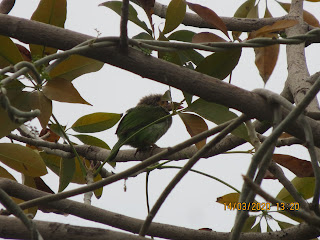My thoughts, things I am learning about birds while I travel or observe.
Friday, June 26, 2020
Barbet Bird
Thursday, June 25, 2020
Treepie
Saturday, June 20, 2020
Drongo
Almost like a little cousin of the Crow.
I hope to capture the Racket Drongo on my camera also. But so far I have been lucky in capturing the Black Drongo only.
This one I was lucky to spot right outside my house in Delhi, while I was parking my car to enter my house. I dropped my things and got my camera while staying silent enough to get these shots in the blazing sun.
Look at the glossy feathers. They are found through out the Indian Union.
Nesting Season: Principally April to August.
Both sexes of the Black Drongo share all domestic duties and are bold in defense of their nest.
I read they are welcomed by farmers as they eat away all the crop damaging insects.
This here is the clearest shot I have ever managed.
Hope you enjoyed reading about the Drongo.
Monday, June 15, 2020
Swallow
I came across two more such opportunities when I visited Australia, once when we went to the Cleveland Wildlife Park in Adelaide, and second while waiting for a bus to take us to a book store near Sydney university in an underground basement entrance. These two sightings have been closer and clearer.
 |
| This here is the White-Browed Wood Swallow |


































